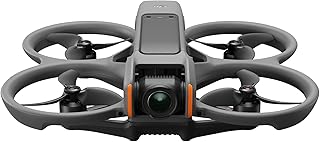DJI: A Drone Empire Built on Innovation and Ambition
DJI's journey from a small startup to the global drone behemoth is a testament to the power of innovation, relentless pursuit of excellence, and a keen understanding of market trends.
The Humble Beginnings (2006-2010):
* The Spark: Founded in 2006 by Frank Wang, a young entrepreneur fascinated with robotics, DJI started as a humble workshop in Shenzhen, China.
* Early Innovation: Their initial focus was on building aerial photography platforms for hobbyists and enthusiasts, with the release of their first multirotor aerial vehicle, the "DJI Phantom," in 2010.
The Rise of the Phantom (2010-2015):
* Game-Changer: The DJI Phantom, with its user-friendly design and powerful capabilities, quickly gained popularity, ushering in a new era of accessible aerial photography and videography.
* Market Dominance: DJI rapidly became the leading force in the consumer drone market, thanks to a combination of continuous innovation, competitive pricing, and a strong focus on user experience.
* Expanding Horizons: DJI expanded its product portfolio with the introduction of the Inspire series, catering to professional filmmakers and photographers, further consolidating its position in the industry.
Into the Professional Arena (2015-Present):
* Beyond Consumer Drones: DJI began to explore the wider potential of drones, venturing into commercial applications like agriculture, construction, mapping, and even law enforcement.
* Professional Grade Equipment: They launched the Matrice series, designed for industrial applications, emphasizing reliability, durability, and advanced features like multi-sensor integration.
* A Global Leader: By continuously pushing the boundaries of drone technology, DJI established itself as the undisputed leader in the global drone industry, capturing a significant market share and dominating various sectors.
Key Factors Contributing to DJI's Success:
* Innovation: DJI's commitment to research and development has resulted in constant innovation and introduction of new features, keeping them ahead of the competition.
* User-Centric Design: Their products are known for their ease of use and intuitive interfaces, making them accessible to both beginners and professionals.
* Competitive Pricing: DJI's strategic pricing has made its drones affordable for a wide range of consumers, driving adoption and market penetration.
* Strong Supply Chain: Their efficient manufacturing processes and global distribution network allow them to scale production and meet increasing demand.
Challenges and the Future:
Despite its dominance, DJI faces challenges like growing competition from other manufacturers, tightening regulations in certain countries, and concerns about data security and privacy. However, the company's commitment to innovation, coupled with its strong brand image and loyal customer base, positions it well to navigate these challenges and continue shaping the future of the drone industry.
In conclusion, DJI's journey is a remarkable testament to how ambition, combined with an unwavering focus on innovation and customer satisfaction, can lead to global dominance in a rapidly evolving market. As drones continue to play an increasingly vital role in various industries, DJI's future is likely to be as dynamic and innovative as its past.


